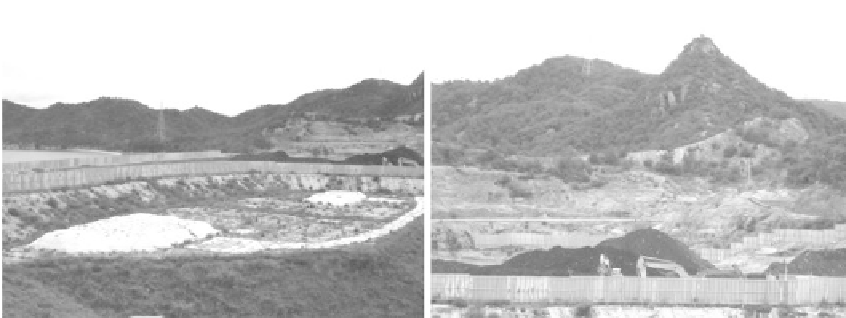Environmental Engineering Reference
In-Depth Information
complaints of disposal of oil, shredder waste and open burning of wastes and a conse-
quent investigation, the company halted disposal operations on the island but left large
amounts of waste at the site. Leaching of the contaminants from the landill and proper
disposal of the contaminants (more than 600,000 tonnes) had to be addressed. Analyses
showed contamination in the soil and leachate, surface, and groundwater (Table 7.4).
Lead, benzene, and PCB in particular were notable. An impermeable wall was con-
structed on the north coast of the disposal area to prevent contaminated water from
lowing out to sea. The industrial waste was then excavated (Figure 7.7) and brought to
Naoshima Island where a melting furnace was constructed. The slag was to be reused
as aggregate in concrete. Comprehensive environmental preservation measures and
full environmental monitoring of sewage and emission gas are planned in Teshima
TABLE 7.4
Average Concentrations of Hazardous Contaminants in the Waste Leachate, Groundwater, and
Surface Water at Teshima
Component
Leachate (mg/L)
Groundwater (mg/L)
Surface Water (mg/L)
Arsenic
0.048
0.004
0.02
Benzene
1.2
1.1
ND
Cadmium
0.022
ND
ND
1,3 dichloropropylene
0.54
ND
ND
Chromium (VI)
0.1
ND
0.03
Dioxins (ng TEQ/L)
8.0
0.031
0.18
Lead
6.1
0.804
0.12
Mercury
0.0017
ND
ND
PCBs
0.016
ND
0.0005
Tetrachloroethylene
0.19
0.0041
ND
Trichloroethylene
ND
0.003
ND
Source:
Takatsuki, H.,
Journal of Material Cycles and Waste Management
, 5, 26-30, 2003.
Note:
ND, not detected.
FIGURE 7.7
Two views of the Teshima waste site with retaining wall where the waste and contaminated soil are contained
before transfer to the treatment plant.






Search WWH ::

Custom Search